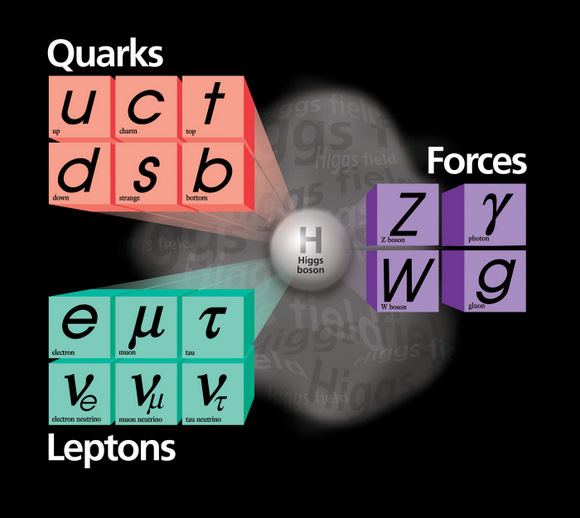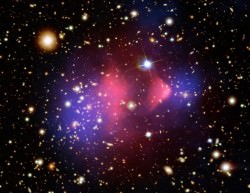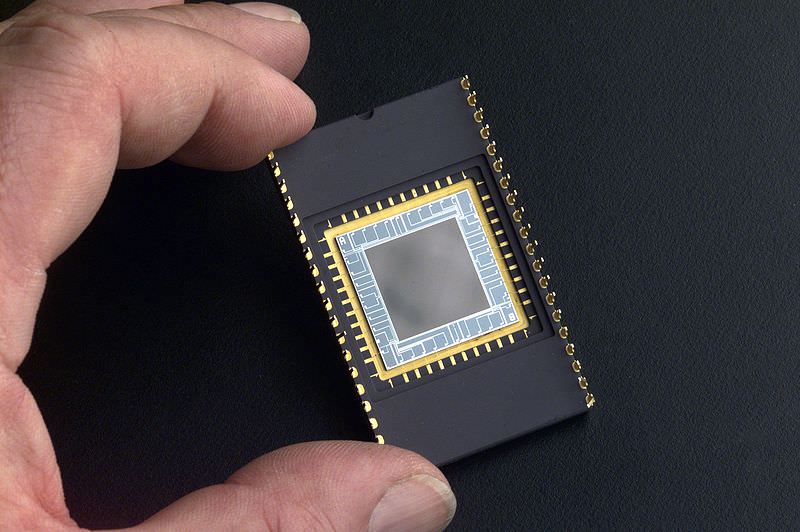What is this thing we keep hearing about – the Higgs Boson, and why is it important?
Continue reading “What is the Higgs Boson?”
Higgs Boson Physicists Receive 2013 Nobel Prize

That was fast! Just one year after a Higgs Boson-like particle was found at the Large Hadron Collider, the two physicists who first proposed its existence have received the Nobel Prize in Physics for their work. François Englert (of the former Free University of Brussels in Belgium) and Peter W. Higgs (at the University of Edinburgh in the United Kingdom) received the prize officially this morning (Oct. 8.)
The Brout-Englert-Higgs (BEH) mechanism was first described in two independent papers by these physicists in 1964, and is believed to be responsible for the amount of matter a particle contains. Higgs himself said this mechanism would be visible in a massive boson (or subatomic particle), later called the Higgs boson. Check out more information on what the particle means at this past Universe Today article by editor Nancy Atikinson.
“The awarded theory is a central part of the Standard Model of particle physics that describes how the world is constructed. According to the Standard Model, everything, from flowers and people to stars and planets, consists of just a few building blocks: matter particles. These particles are governed by forces mediated by force particles that make sure everything works as it should,” the Royal Swedish Academy of Sciences said in a statement.

“The entire Standard Model also rests on the existence of a special kind of particle: the Higgs particle. This particle originates from an invisible field that fills up all space. Even when the universe seems empty this field is there. Without it, we would not exist, because it is from contact with the field that particles acquire mass. The theory proposed by Englert and Higgs describes this process.”
A very thrilled CERN (the European Organization for Nuclear Research) noted that the Standard Model theory has been “remarkably successful”, and passed several key tests before the particle was unveiled last year in ATLAS and CMS experiments at the Large Hadron Collider.

“The discovery of the Higgs boson at CERN last year, which validates the Brout-Englert-Higgs mechanism, marks the culmination of decades of intellectual effort by many people around the world,” stated CERN director General Rolf Heuer.
CERN added that the discovery last year was exciting, but the Higgs boson only explains only the matter that we can see. CERN is among the organizations on the hunt for dark matter and energy, forms that can’t be sensed with conventional observatories but can be seen through their effects — such as gravitational lensing.
Sources: CERN, The Royal Swedish Academy of Sciences
The 2012 Nobel Prize in Physics, Explained
This hot-off-the-press video from the science-explainer folks at Sixty Symbols does a great job of detailing the science of the work by Serge Haroche of France and American David Wineland, which won them 2012 Nobel Prize in physics today. Their experiments on quantum particles have already resulted in ultra-precise clocks and may one day help lead to computers that can work faster than those in use today.
The video also shows how expectations were that the prize might go to the teams at the Large Hadron Collier for the discovery of what they called a “Higgs-like boson” — a particle that resembles the long sought-after Higgs.
Continue reading “The 2012 Nobel Prize in Physics, Explained”
Video: Nobel Prize Winner Explains The Expanding Universe
In this video Saul Perlmutter, one of the three winners of the 2011 Nobel Prize in Physics, explains how dark energy, which makes up 70 percent of the universe, is causing our universe to expand.
Accelerating Expansion of Universe Discovery Wins 2011 Nobel Prize in Physics
[/caption]
Three scientists shared the 2011 Nobel Prize for physics for the discovery that the expansion of the universe is speeding up, the Nobel prize committee announced today. Half of the $1.5 million prize went to American Saul Perlmutter and the rest to two members of a second team which conducted similar work: American Adam Riess and U.S.-born Brian Schmidt, who is based in Australia. All three made the discovery through observations of distant supernovae.
Perlmutter is from the Lawrence Berkeley National Laboratory and University of California, Berkeley, and worked on the Supernova Cosmology Project. Schmidt is from the Australian National University and Riess is from the Johns Hopkins University and Space Telescope Science Institute, Baltimore. They worked together on the High-z Supernova Search Team.
In response to the announcement, Professor Sir Peter Knight, President of the Institute of Physics, said, “The recipients of today’s award are at the frontier of modern astrophysics and have triggered an enormous amount of research on dark energy.
“These researchers have opened our eyes to the true nature of our Universe. They are very well-deserved recipients.”
Source: IOP
Your CCD Camera Just Won a Nobel Prize
[/caption]
Well, actually, the people who invented the first successful imaging technology using a digital sensor, called a CCD (Charge-Coupled Device), have been awarded the Nobel Prize in Physics. In 1969 Willard S. Boyle and George E. Smith came up with the idea “from their own heads,” Smith said, and CCDs revolutionized photography, as light could now be captured electronically instead of on film, and became an irreplaceable tool in astronomy, providing new possibilities to visualize the previously unseen. The device also made it possible for amateur astronomers to rival the professionals in terms of quality astrophotography. CCD technology is also used in many medical applications, e.g. imaging the inside of the human body, both for diagnostics and for microsurgery. Sharing the prize with Boyle and Smith is Charles K. Kao, who in 1966 made a discovery that led to a breakthrough in fiber optics.
Both achievements helped shape the foundations of today’s networked societies.
Read more about the prize here.
Listen to the call where Smith learned he had been awarded the Nobel Prize in Physics.



